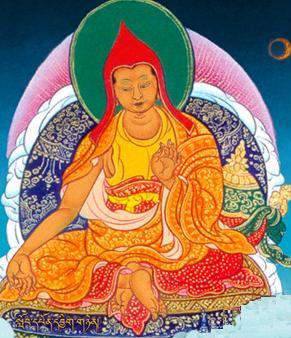Vasubandhu: Difference between revisions
Jump to navigation
Jump to search
No edit summary |
No edit summary |
||
| Line 1: | Line 1: | ||
'''Vasubandhu''' numbers among the ‘Six Ornaments’, the greatest Buddhist authorities of Ancient India. He was the younger brother of [[Asanga]], and composed ''The Treasury of Abhidharma'' (''[[Abhidharmakosha]]'' [Skt.]), a complete and systematic account of the [[Abhidharma]], the peak of scholarship in the [[Fundamental Vehicle]]. Later he followed the [[Mahayana]] [[Yogachara]] view, and wrote many works, such as ''[[Thirty Stanzas on the Mind]]'' | [[image:Vasubandhu.JPG|frame|'''Vasubandhu''']]'''Vasubandhu''' numbers among the ‘Six Ornaments’, the greatest Buddhist authorities of Ancient India. He was the younger brother of [[Asanga]], and composed ''The Treasury of Abhidharma'' (''[[Abhidharmakosha]]'' [Skt.]), a complete and systematic account of the [[Abhidharma]], the peak of scholarship in the [[Fundamental Vehicle]]. Later he followed the [[Mahayana]] [[Yogachara]] view, and wrote many works, such as ''[[Thirty Stanzas on the Mind]]'' | ||
(''Trimsikavijñapti-karika'' [Skt.]). | (''Trimsikavijñapti-karika'' [Skt.]). | ||
[[Category:Historical Masters]] | [[Category:Historical Masters]] | ||
[[Category:Seventeen Nalanda Masters]] | [[Category:Seventeen Nalanda Masters]] | ||
Revision as of 08:17, 14 December 2006

Vasubandhu numbers among the ‘Six Ornaments’, the greatest Buddhist authorities of Ancient India. He was the younger brother of Asanga, and composed The Treasury of Abhidharma (Abhidharmakosha [Skt.]), a complete and systematic account of the Abhidharma, the peak of scholarship in the Fundamental Vehicle. Later he followed the Mahayana Yogachara view, and wrote many works, such as Thirty Stanzas on the Mind
(Trimsikavijñapti-karika [Skt.]).